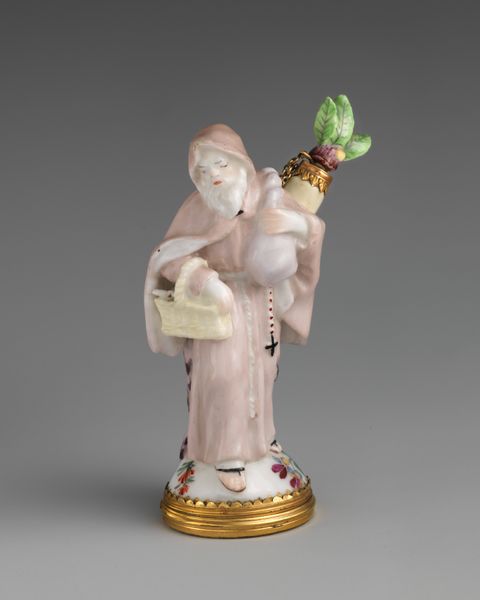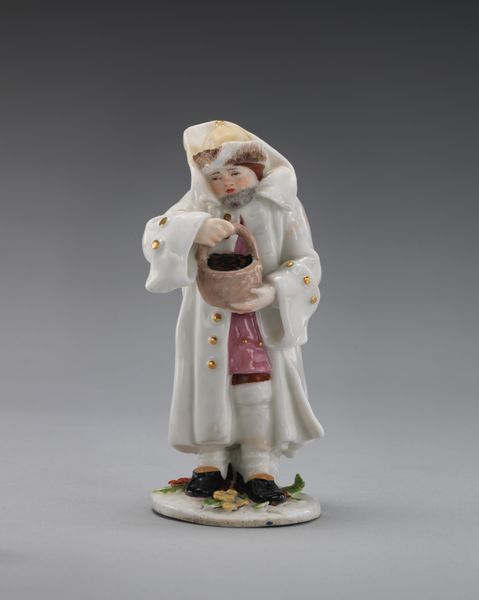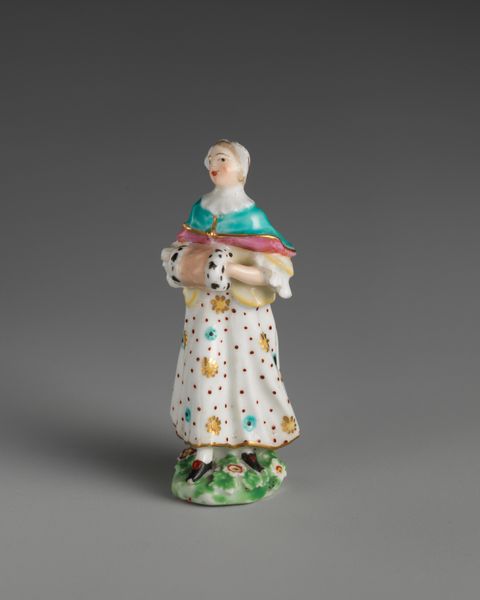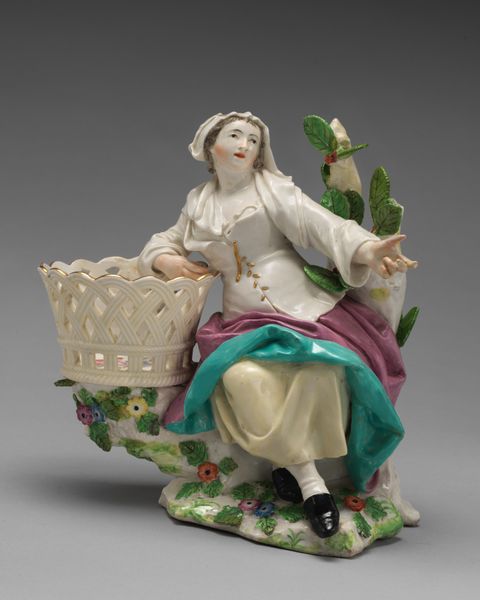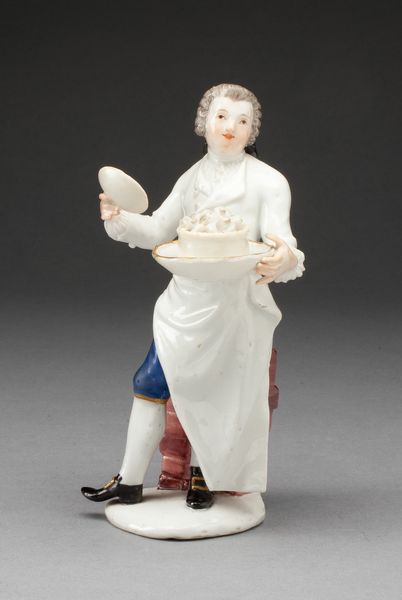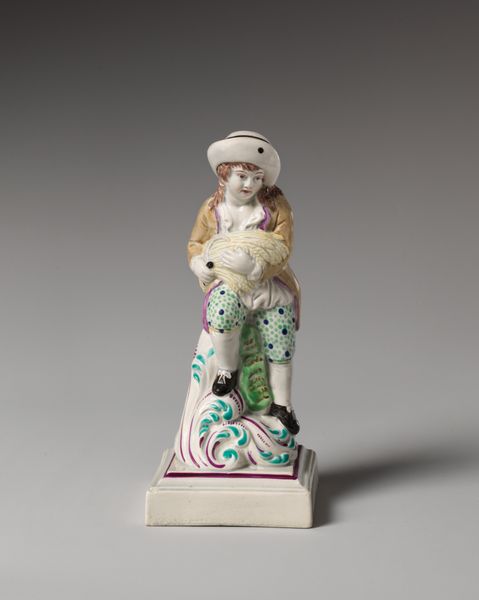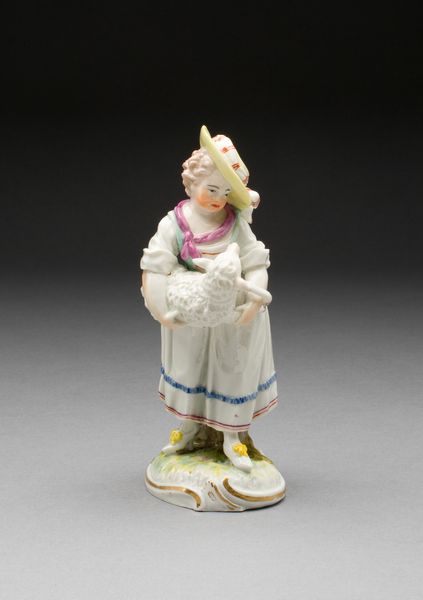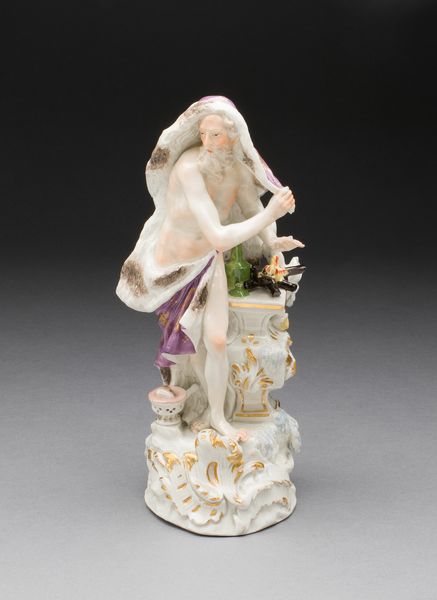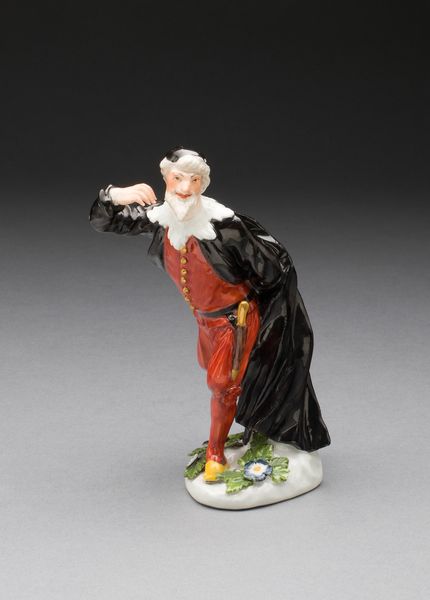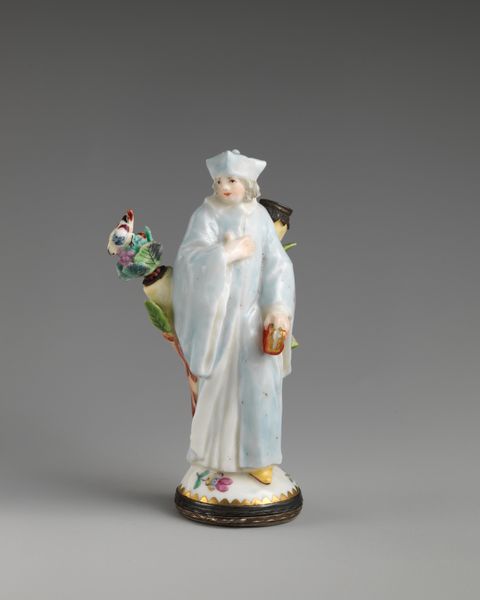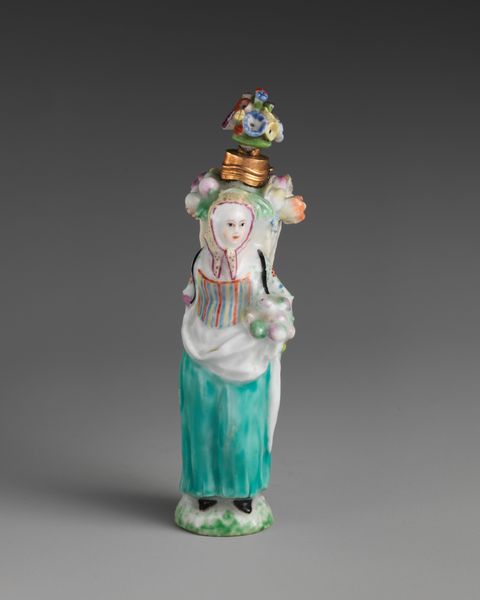
ceramic, porcelain, sculpture
#
book
#
ceramic
#
porcelain
#
sculpture
#
men
#
decorative-art
Dimensions: 3 1/4 × 2 in. (8.3 × 5.1 cm)
Copyright: Public Domain
Editor: This delicate porcelain sculpture, titled "Priest with Missal," dates back to 1750-1760, and was crafted by the Chelsea Porcelain Manufactory. The figure's restrained palette—primarily blacks, whites, and delicate pastels—creates a surprisingly calming mood, even with the gilded detailing. What stands out to you? Curator: Observe how the artist exploits the material's inherent properties. Porcelain's capacity for capturing fine detail is evident in the priest's garments and facial features, achieving a striking level of realism within the decorative art context. The composition skillfully balances the figure's verticality with the swirling foliage and implements behind it. Note the carefully considered distribution of color – the dark cloak, juxtaposed against the white alb, creates a clear visual hierarchy, directing the viewer's eye. How does this chromatic contrast influence your interpretation of the piece? Editor: I think the strong contrast accentuates the priest's solemnity, drawing attention to his face and the book, as if highlighting the importance of contemplation and learning. It also makes me consider the texture and sheen of the porcelain itself, which seems essential to its overall effect. Do you think the materiality contributes to the work's deeper significance? Curator: Precisely. The glossy surface enhances the light and shadow play, thus enhancing the sculptural form. Porcelain's association with luxury and refinement infuses the piece with an elevated sense of status, appropriate for representing a religious figure. It's an elegant construction based on balanced geometries. What have you gleaned from examining the object so intently? Editor: Looking through a formal lens really changed my perspective! It helped me look beyond the religious theme to fully appreciate the artistry and visual strategy employed in the porcelain form and chromatic tension. Curator: Indeed. By examining these compositional and material elements, we gain a more comprehensive understanding of the artist's intentions and the object's aesthetic value, disentangling decorative delight from formal sophistication.
Comments
No comments
Be the first to comment and join the conversation on the ultimate creative platform.

